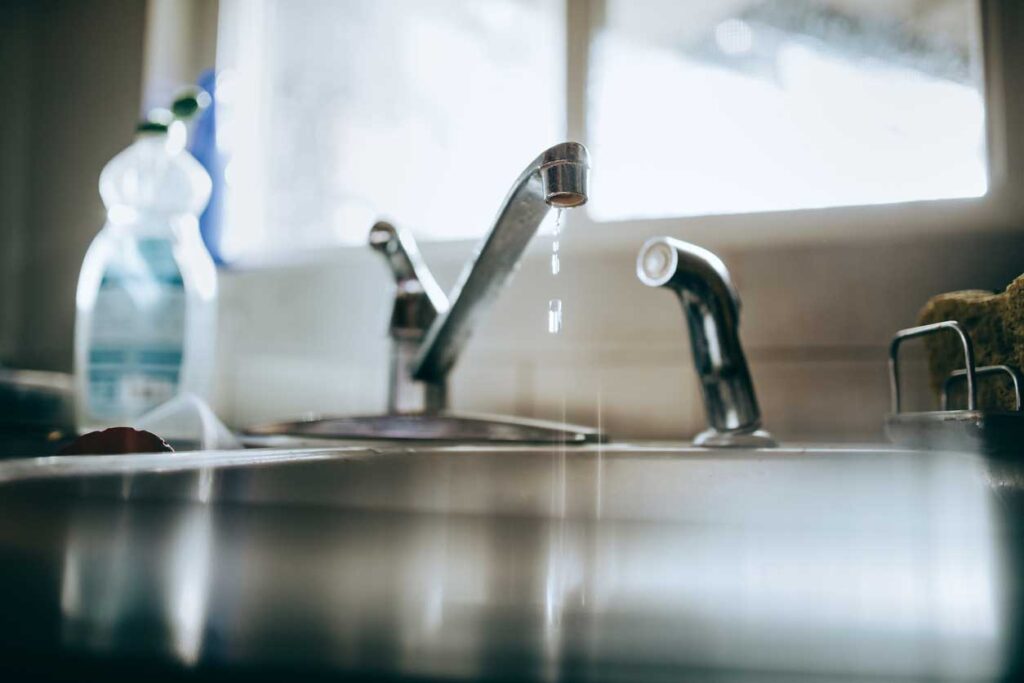How to Fix a Leaky Faucet on Your Own
It’s little wonder that Chinese water torture ranks among the worst forms of punishment ever invented. Anyone with a leaky faucet can attest to just how torturous the monotonous “drip, drip, drip” can be, regardless of whether that tiny droplet is falling on your forehead or into a sink.
By now, you’ve probably tried everything to stop that leaking faucet. You’ve adjusted the handle every which way. You’ve turned off the water. You’ve placed something underneath the faucet to dampen that incessant dripping sound. But all to no avail. You can’t stop that leaking faucet any more than you can hold back a raging river.
And as if the psychological torture wasn’t enough, that leaky faucet is going to hit you where it hurts the most once your bill arrives. Depending on the drip rate, a single leaky faucet can waste more than 32 litres of water every day. That “drip, drip, drip” might as well be the sound of money leaking out of your bank account and going down the drain.
But before you take a sledgehammer to your sink or sell your house and move somewhere that doesn’t have running water, a leaky faucet doesn’t have to drive you crazy. Fortunately, there are some tricks you can try on your own to fix the leak before it drips away your last shred of sanity.
Shut Off the Water
The first thing you’ll want to do to fix that leaky faucet is to cut off its water supply—no water, no dripping. Different homes will have different types of faucets—and different types of faucets in different rooms—but the principles are the same.
Most homes will have shut-off valves underneath the sink that you simply need to twist into the “Off” position. Other sinks will have ball faucets that require you to remove the handle to shut the water off.
If you have multiple faucets that are leaking or can’t find the shut-off valve for a particular sink, you can shut off your home’s main water supply. Either way, you’ll want to leave the faucet itself open to drain out any excess water that is still in the pipes.
Remove and Disassemble the Handle
This seems intimidating but it’s a great deal simpler than you might think. Once again, how you remove the faucet will depend on the type of faucet you have. Before you begin, however, place a towel or drain stopper in the sink to prevent small parts from falling down into your drain pipes.
You’ll then want to inspect your faucet to see how it comes apart. Some faucets will have hidden screws beneath decorative caps so if you can’t find them, that’s a good place to look. You’ll likely need an Allen wrench or Phillips-Head screwdriver so get those handy. As you disassemble the faucet, don’t be shy about taking pictures so that you can remember where everything goes when it comes time for reassembly.
Inspect the Cartridge
Once you have removed the faucet and placed it aside, you can then inspect the cartridge or stem and mounting screws. If any of those components are obviously broken or otherwise compromised, use a wrench or needle-nose pliers to remove them. Take the parts to your local hardware store for reference and find the appropriate replacements.
Inspect and Clean Your Faucet
Sometimes a leaky faucet is trying to tell you that it needs a little bit of attention. Over time, minerals in our water supply can collect within our faucets and erode the parts that prevent leaks. Rubber O-rings, in particular, are prone to wear and tear.
Once you’ve disassembled your faucet, use white vinegar to clean all of the parts—including the aerator—by removing mineral and mold buildup. You may need to replace the O-ring if it no longer creates a perfect seal.
Reassemble and Reinstall Your Faucet
Once you’ve inspected, cleaned, and replaced all of the parts of your cartridge and faucet that needed attention, it’s time to reassemble. As you reassemble your faucet, reference the pictures that you took when you were disassembling it to ensure that everything is where it ought to be.
With your faucet successfully reinstalled, it’s time to turn the water back on and listen in glee and sweet relief at the sound of silence. There’s no need to be concerned if your faucet sputters after you turn the back on—it is just clearing the air in the pipes.
Call a Professional
Of course, if all else fails, you can always dynamite your kitchen faucet… alright, not actually. That would definitely make matters much, much worse. And Johnny Law might have some questions for you. But you can always call Plumbing Medic or request an appointment with us using our online booking system. If you live in southeastern Ontario or the surrounding areas, one of our expert plumbers will be happy to put an end to your drip torture nightmare.

